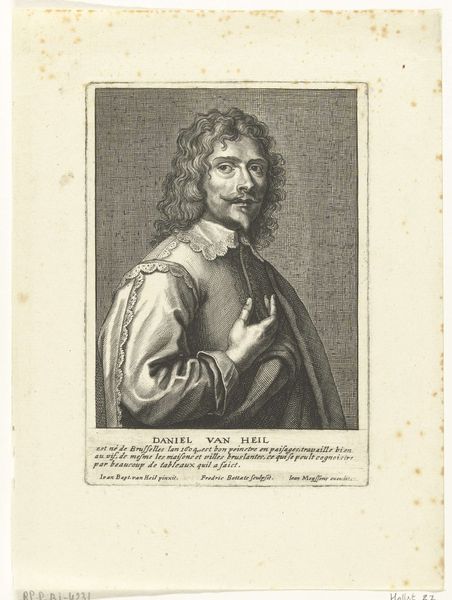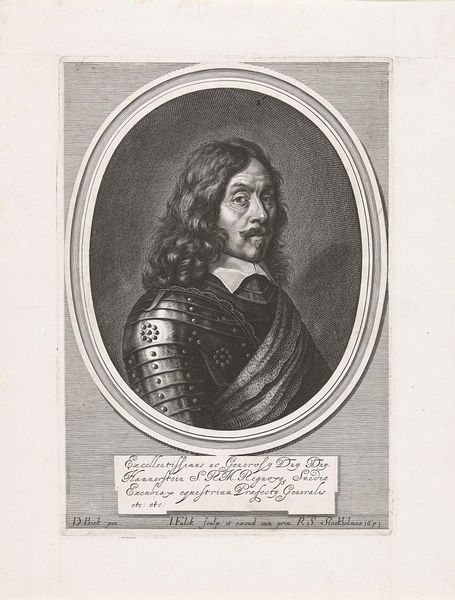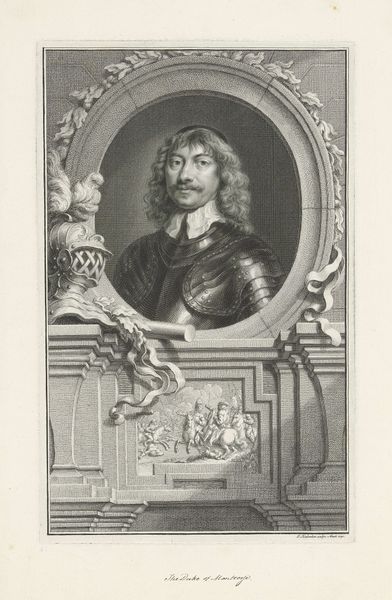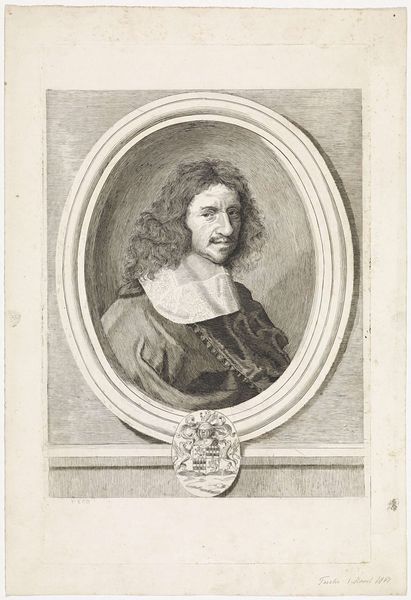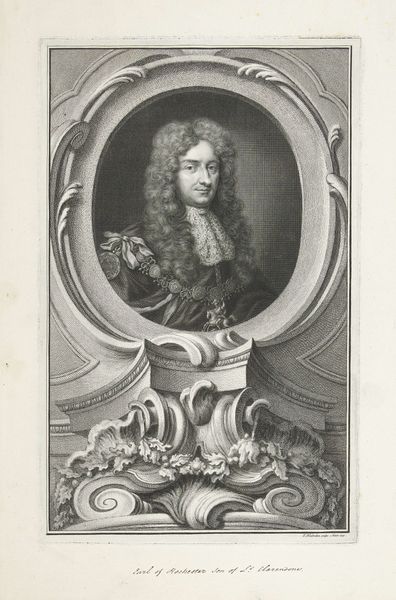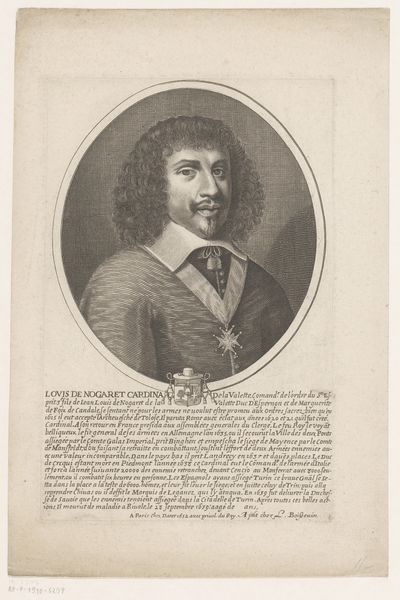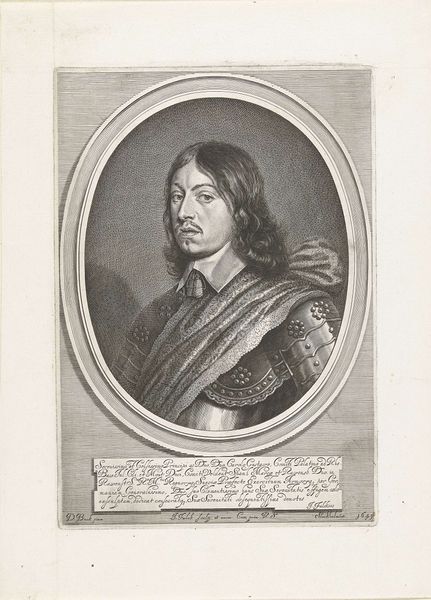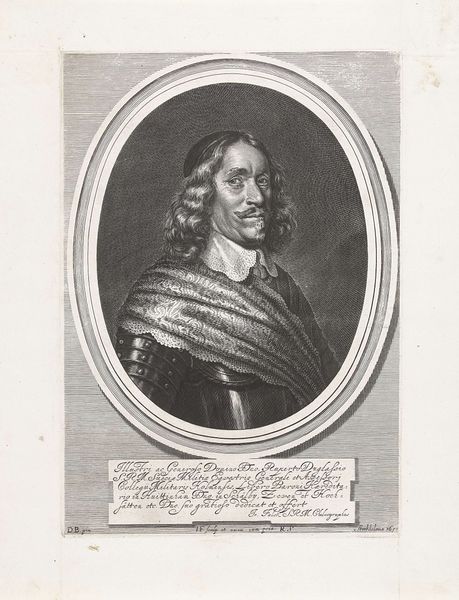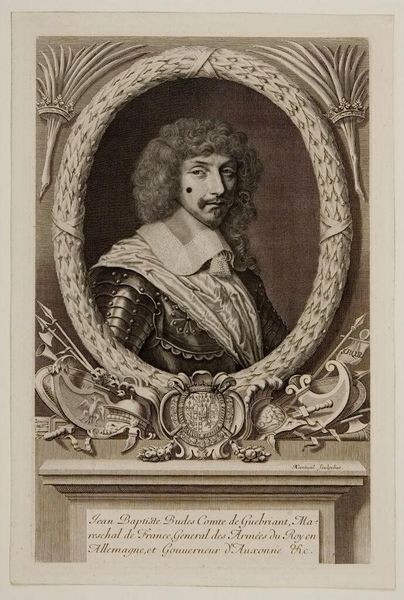
drawing, print, graphite, engraving
#
portrait
#
drawing
#
baroque
# print
#
pencil drawing
#
graphite
#
graphite
#
engraving
Dimensions: height 318 mm, width 223 mm
Copyright: Rijks Museum: Open Domain
Curator: Looking at this print, I'm immediately drawn to the detail achieved with what looks like simple engraving techniques. The light and shadow create such depth! Editor: Indeed. This is Jeremias Falck's "Portret van Axel Lillie," created in 1651. Falck was known for his engravings and prints, which were crucial in disseminating images and ideas at the time. How do you read the choice of the materials themselves, the graphite and engraving? Curator: The stark contrast of the monochrome palette intensifies the subject’s gaze. It is very direct! And then there is the oval frame... almost neoclassical. Editor: Think about where this portrait was meant to be viewed. Prints like this were often produced and collected as commodities. Consider the engraver’s labor: meticulous and repetitive work transformed into objects circulating amongst collectors, reinforcing class distinctions and patronage networks. The artist transforms raw material into something else entirely! Curator: Yes, that's all there, but just from the shapes and values, the artist builds a powerful image, irrespective of the engraving as a saleable artefact of production. Consider, the circular border isolates him, the texture of the man’s wavy hair against his rigid armour, and even the details in his patterned sash all contribute to a powerful formal tension. Editor: Perhaps. But I see it as embedded in its historical moment. The portrait isn’t just about individual representation, but a tool within larger power structures—commemorating individuals like Axel Lillie, a military figure, thereby promoting certain ideologies and solidifying social hierarchies. Curator: A perfect demonstration of what can be gleaned from examining a work both visually and within its cultural moment! Editor: Precisely. Looking at how labor and social forces come together in creating a visual record helps us think more deeply about history itself.
Comments
No comments
Be the first to comment and join the conversation on the ultimate creative platform.

